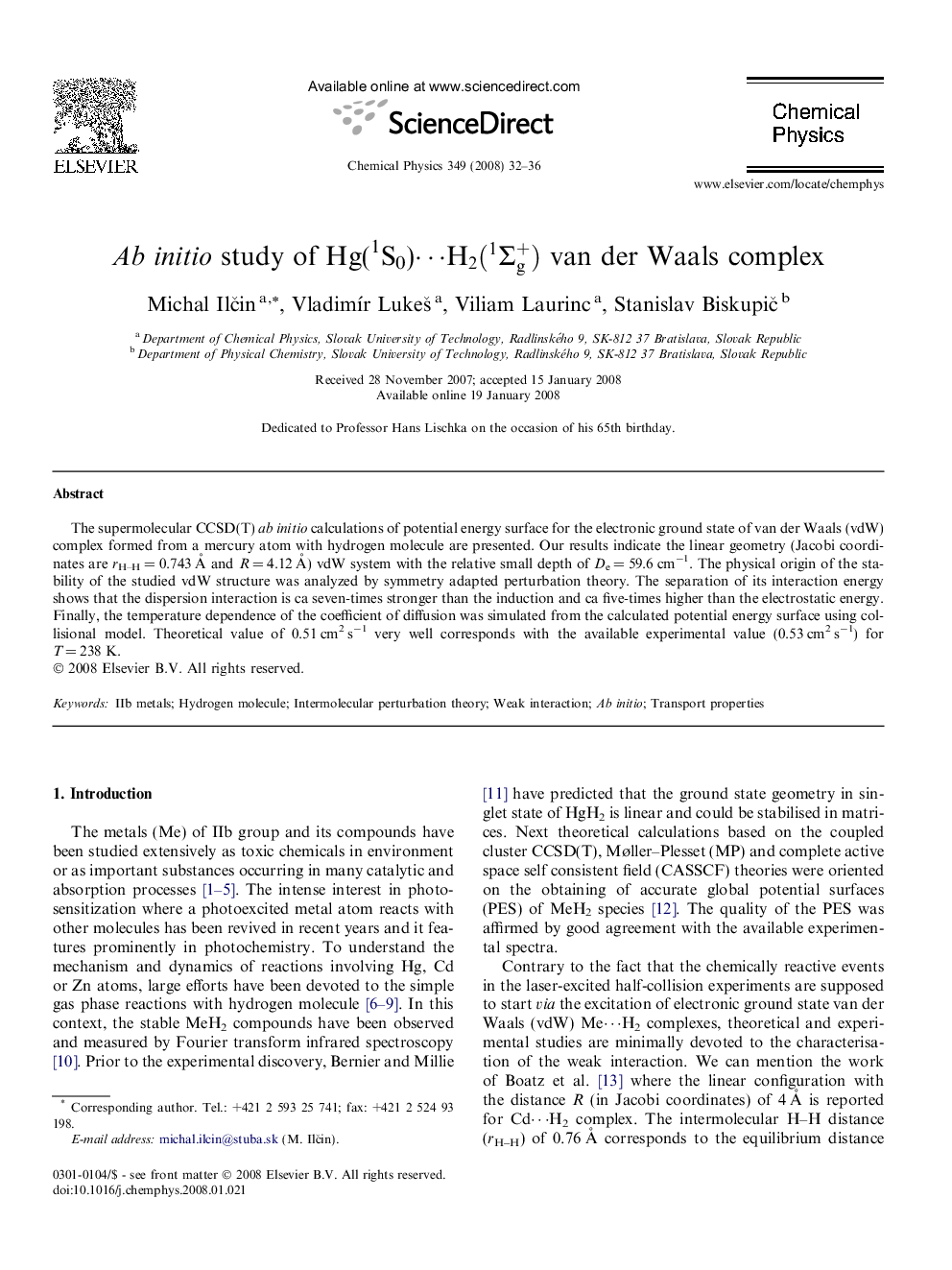| Article ID | Journal | Published Year | Pages | File Type |
|---|---|---|---|---|
| 5375928 | Chemical Physics | 2008 | 5 Pages |
Abstract
The supermolecular CCSD(T) ab initio calculations of potential energy surface for the electronic ground state of van der Waals (vdW) complex formed from a mercury atom with hydrogen molecule are presented. Our results indicate the linear geometry (Jacobi coordinates are rH-HÂ =Â 0.743Â Ã
and RÂ =Â 4.12Â Ã
) vdW system with the relative small depth of De = 59.6 cmâ1. The physical origin of the stability of the studied vdW structure was analyzed by symmetry adapted perturbation theory. The separation of its interaction energy shows that the dispersion interaction is ca seven-times stronger than the induction and ca five-times higher than the electrostatic energy. Finally, the temperature dependence of the coefficient of diffusion was simulated from the calculated potential energy surface using collisional model. Theoretical value of 0.51 cm2 sâ1 very well corresponds with the available experimental value (0.53 cm2 sâ1) for T = 238 K.
Related Topics
Physical Sciences and Engineering
Chemistry
Physical and Theoretical Chemistry
Authors
Michal IlÄin, VladimÃr LukeÅ¡, Viliam Laurinc, Stanislav BiskupiÄ,
